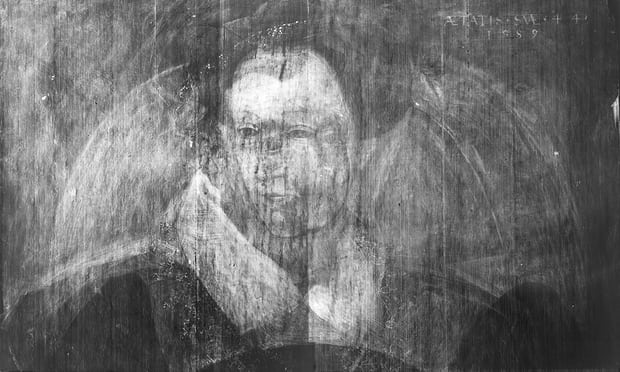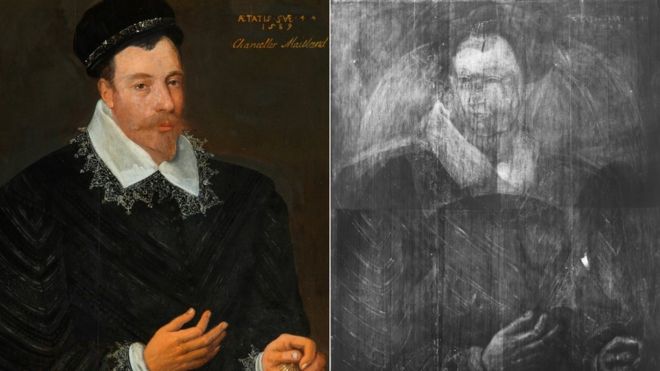Ghostly portrait of Mary Queen of Scots emerges from 16th Century painting
A unfinished portrait believed to be of Mary, Queen of Scots has been found beneath a 16th Century painting. The hidden drawing was discovered by conservator Dr Caroline Rae from the Courtauld Institute. An X-ray revealed the image underneath the 1589 portrait of Sir John Maitland, Lord Chancellor of Scotland, painted by Dutch portrait artist Adrian Vanson for Mary's son King James VI, two years after she was executed. The Maitland painting is part of a National Trust collection and went on display this weekend at the Scottish National Portrait Gallery in Edinburgh.
Born in Linlithgow Palace in Scotland on 7th December 1542, Mary Stuart was the daughter of James V of Scotland and Mary of Guise. Six days after the birth of Mary Stuart her father died and she became Queen of Scotland. Her mother was chosen as regent to rule on her daughter’s behalf, and Mary was sent to France in 1548 where she lived as part of the French royal family. In April 1558, Mary married the heir to the French throne Francis. In July 1559 Francis succeeded his father becoming King Francis II and Mary became Queen of France as well as of Scotland. In December 1560 Mary's husband Francis II died after a reign of just 17 months and Mary decided to return to Scotland at the age of 18.
After a troubled reign Mary was imprisoned and on 24th July 1567 she was forced to abdicate in favour of her one year old son who became King James VI of Scotland. Mary’s half-brother, James Stewart, Earl of Moray was appointed Regent on behalf of his nephew. Mary escaped captivity and gathering an army fought a battle at Langside on 13th May 1568. She was defeated and Mary left Scotland for England to seek the support of her cousin Queen Elizabeth I (7 September 1533 – 24 March 1603).
Mary was never to return to Scotland and spent the rest of her life in captivity in England. She was implicated in a conspiracy plotting the assassination of her cousin Queen Elizabeth I and was executed at Fotheringhay Castle on 8th February 1587 when Mary was aged 44. Mary was initially buried at Peterborough Cathedral. When Elizabeth I died in 1603 without issue Mary’s son, James, ascended the English throne. In 1612, James arranged to have his mother’s remains re-interred in a chapel opposite the tomb of Elizabeth I at Westminster Abbey.







